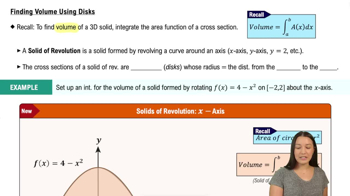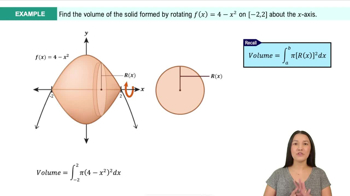Let R be the region bounded by the following curves. Find the volume of the solid generated when R is revolved about the given line.
x=2−secy,x=2,y=π/3, and y=0; about x=2
 Verified step by step guidance
Verified step by step guidance Verified video answer for a similar problem:
Verified video answer for a similar problem:



 5:38m
5:38mMaster Introduction to Cross Sections with a bite sized video explanation from Patrick
Start learning